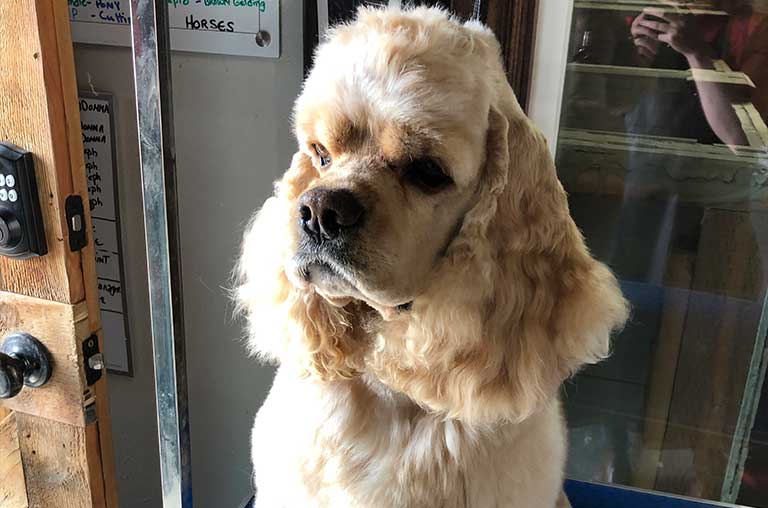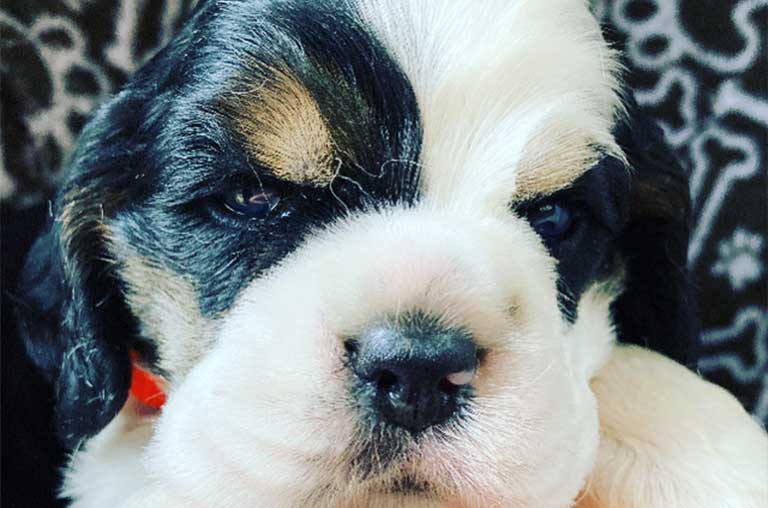It’s a heartbreaking moment for any pet parent to witness a cherry eye look worse after surgery. The prolapse of the third eyelid gland causes the cherry eye in dogs. With proper treatment, the condition is mostly treatable in young dogs.
What is Cherry Eye
Just like humans, domesticated animals have upper and lower eyelids, but they also have a third eyelid, which we lack (or nictitating membrane). The eyeball is shielded by this structure when the animal blinks, either totally or partly. In order to maintain the health of the cornea, it also functions like a windscreen wiper by distributing the tissue uniformly over the eye.
The third eyelid gland, also known as the nictitans gland, is a very significant gland that is located at the base of the third eyelid. The name “cherry eye” is used when the gland is visible and typically appears as a pink, fleshy lump. The gland may protrude, causing the third eyelid to invert. The third eyelid cannot carry out its crucial “window-wiper” job while this gland is protruding because it is unable to discharge the tears it produces. If the situation is neglected, it may result in the gland being dried up, ulcerated, and painful. Leaving it out of place for too long might potentially cause irreparable harm.
What Leads to Dogs’ Cherry Eyes?
Less than a year old dogs are more likely to get the cherry eye. When the little ligament holding the third eye gland in place expands or ruptures, the disease occurs. The cause of this is a mystery to veterinarians, and surgery is usually always required for therapy.
Typical reasons include:
- damaged or stretched ligament
- a breed’s propensity
When To See A Doctor
Unfortunately, a lot of pet owners don’t realize when it’s appropriate to take their animals to the veterinarian. Consultation with a veterinarian is the initial step in diagnosing cherry eye, even if your pooch doesn’t immediately need surgery.

You may communicate with a qualified veterinarian from the convenience of your own home if you have concerns about your dog’s eye health so they can diagnose your pet and inform you of the available treatments.
How to cure cherry eye in canine
About 35% of the watery tears your dog makes are produced by the third eyelid gland. A dry eye can result from prolapsed eyelid glands that eventually stop functioning. Dogs that suffer from dry eyes, which may result in ulcers, infections, and even rupture of the eye itself, are at risk for serious health problems. The danger of getting dry eye is decreased but not completely by surgically treating your canine’s cherry eye. Dogs with prolapsed third eyelid glands need to undergo ongoing monitoring for dry eye, which can appear several years after treatment.
Typically surgery is required to treat the cherry eye. The gland beneath the third eyelid can be replaced surgically using a variety of methods. During your visit to the vet, your veterinarian will go through their treatment strategy with you. You could occasionally be recommended to a veterinary ophthalmology expert. These experts cure numerous cherry eye problems and can help handle any other visual issues your dog may experience.
Your veterinarian could suggest surgical removal of the gland in extreme situations when replacement attempts failed or a gland has been distended for a long period and is no longer functioning. But because it affects tear production permanently, this is only used as a last option.
There are numerous common corrective surgical procedures that all function rather well. The cherry eye surgery success rate is approximately about 90%.
What occurs after cherry eye surgery?
Your favorite doggo undergoing surgery might be distressing for you as a pet parent, but recovery is relatively painless. Within a few weeks, the majority of dogs resume their regular routines. The only visits you will need to worry about are those with the vet to examine the surgery site and make sure everything is healing correctly. To avoid infection and itching it is highly recommended for dogs wear cone after cherry eye surgery. The cherry eye look worse after surgery situation may also arise.
Cherry eye surgery complications

Possible complications include:
irritation or inflammation as the stitching comes out.
The cherry eye may return if the tissue gap is not sufficiently tightened.
pain brought on by the loosened stitch failing to stay in place. Depending on the type of stitch used, a loose stitch might cause damage to the eye.
Although dangerous side effects after cherry eye surgery are rare, the condition might return. It is crucial to inform your veterinarian if a Cherry Eye reappears so that a second surgery- either with your regular veterinarian or an ophthalmology specialist- can be scheduled. After a Cherry Eye repair, an owner might anticipate some postoperative swelling, but this should go down and the eye should be comfortable and seem normal in about a week. The eye should be examined again as soon as possible if it becomes unexpectedly uncomfortable or has an odd look.
The cherry eye surgery cost can be starting from $300 to $500 for a single eye and up to $800 for both eyes.
How long does it take for a dog to recover from surgery?
Each animal’s recovery from surgery is unique and is influenced by a variety of factors, including the type of operation, the animal’s age and condition, and its innate capacity for healing. However, in general, the healing process for a dog’s eye following surgery takes between two and four weeks. The first few days following surgery are frequently the most crucial, therefore it’s crucial to keep your dog quiet and calm throughout this time so that adequate healing can take place.
What to do if cherry eye look worse after surgery
Sadly, cherry eye after surgery has a chance of returning to the same eye. Cherry eye will only worsen if surgical treatment is not received. Dogs typically get cherry eyes in both eyes, however, this is not always the case. In order to reposition the gland firmly, the doctor should combine or alter surgical procedures.

One post-operative problem that is frequently observed results from the dog’s behavior. Following surgery, the dog could experience discomfort at the surgical site and want to touch its eye to feel better. Preventing this from happening is essential.
It’s common for some swelling and inflammation to develop after surgery, as with any procedure. Corticosteroid eye drops are frequently prescribed by veterinarians to minimize swelling and inflammation, however, some vets point out that doing so may cause the incision site’s recovery to be delayed. Instead, they advise taking an oral nonsteroidal anti-inflammatory medication for a few days along with a broad-spectrum antibiotic eye ointment.
Consult your veterinarian if you observe green discharge after cherry eye surgery, and your dog is squinting and pawing at the eye. There’s a possibility that your dog has a corneal scrape. If your dog is using steroid eye drops, this might worsen the situation and delay recovery.
How to Take Care of your dog Before and after cherry eye surgery
Although cherry eye does not cause a life-threatening concern, it is essential to get medical attention as soon as possible to prevent discomfort and potential side effects including infection from the revealed nictitating membrane or third eyelid.
If the dog pulls on the leash, lead walks must be avoided since the tension on the neck will stimulate the gland to reappear. Consequently, buying a leash for walks could be a wise purchase.
You should take precautions and prevent your dogs from playing tug-of-war or other activities that require mouth-pulling. Until the healing process is complete, this should be avoided since it may strain the eye.
Is cherry eye a serious condition?
Dogs’ cherry eyes are not life-threatening or urgent medical conditions. The sooner you arrange surgery and discuss your treatment choices with the veterinarian, the better. The majority of dogs with cherry eyes enjoy happy, healthy lives.
How to protect canines from cherry eye
Dogs’ cherry eye cannot be prevented. However, if you are aware that the breed of your dog is prone to cherry eye, make it a habit to routinely check your puppy’s eyes for indications of itchiness, redness, or notable swelling. Breeds of dogs that are more likely to develop cherry eyes are also more likely to develop entropion, distichia, and dry eyes. Even if your dog never gets cherry eye, routine eye examinations might help you spot another condition.
Conclusion
To avoid situations like cherry eye look worse after surgery, dogs must be cautious for a few days and shouldn’t engage in any rigorous activity until their doctor has given the all-clear. They should not engage in activities such as tug-of-war, or they cannot get dirt into the surgical site. Any type of surgery will worry your dog, so be sure to spend more time with them throughout their recovery so they know they are loved and everything is okay in the world.
FAQs
1. What Should Cherry Eye Look Like After Surgery?
After Cherry Eye surgery, an owner may anticipate some postoperative inflammation. This time the third eyelid may seem reddish and swollen for a few days or weeks; which is normal. You may also notice some ocular discharge with a bloody tint for the first few days.
2. How Long Does It Take for Cherry Eye to Go Away After Surgery?
The recovery time following surgery is often short, and the majority of dogs begin to improve within a few days. Within two to three weeks, the gland will gradually reposition itself to its original location. But occasionally, the gland might not move back into place and would need to undergo a second operation.
3. What Happens If Cherry Eye Comes Back After Surgery?
Bring the dog back to the vet. There are a few things that may be done to aid the dog, including applying a pressure bandage over the affected eye. If the vet decides to do this (or perform another surgery), the dog will be fitted with an Elizabethan collar to prevent him from removing the bandage. It may feel difficult but perhaps it’s only temporary, and the dog will be back to normal soon.
4. Can Cherry Eye Surgery Go Wrong?
Most of the time, the gland resumes its usual activity a few weeks after Cherry Eye Surgery. In 5 to 20% of patients, the third eyelid gland may relapse and necessitate may require further surgery.
5. How Long Should Dog Wear Cone After Cherry Eye Surgery?
In order to keep your pet from scratching out the stitches that are binding the third eyelid gland in place, a cone will need to be worn at all times until the operation area has healed. For the majority of instances, it may take 1-2 weeks.
![Cherry Eye Look Worse After Surgery [What to Do]](https://cuttinbluefarms.com/wp-content/uploads/2022/11/Cherry-Eye-Look-Worse-After-Surgery-.jpg)
Leave A Comment